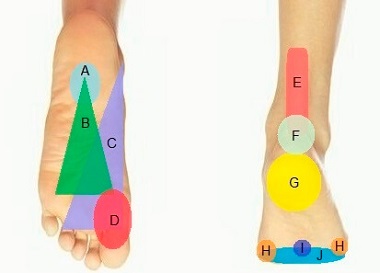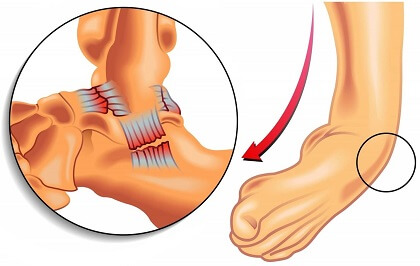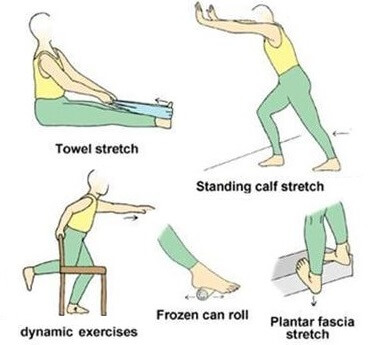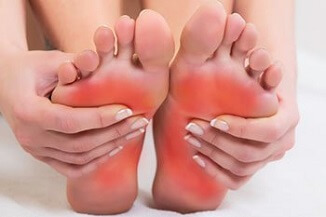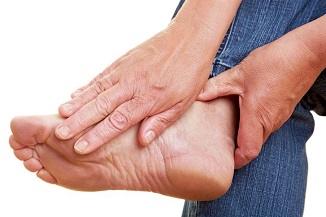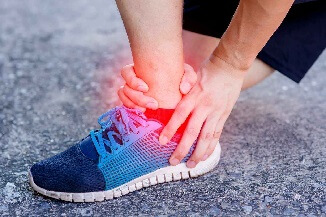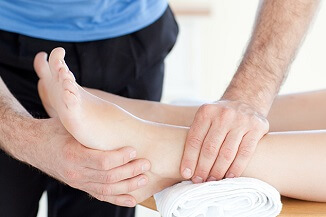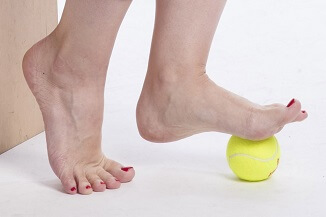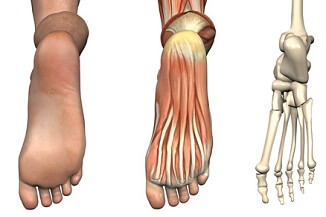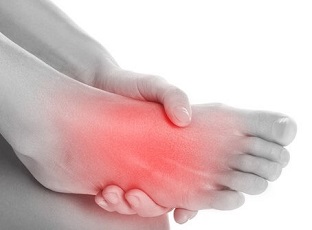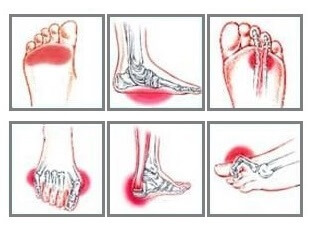Foot Pain Explored
Written By: Chloe Wilson BSc(Hons) Physiotherapy
Reviewed By: FPE Medical Review Board
Foot pain is a common problem. The foot is made up of 26 bones, 33 joints and over 100 muscles, ligaments and tendons. Each year we take on average half a million steps, so it’s no wonder that things go wrong.
The good news is that most cases of foot pain will settle with simple treatment at home. I have helped countless people beat foot and ankle pain, having worked as a physiotherapist (PT) for over 10 years.
How To Beat Foot Pain
How To Beat Foot Pain
The key to beating foot pain is to understand what is wrong, why it is causing pain, how to treat it and how to stop it from coming back. But where should you start?
1. Foot Pain Diagnosis
Foot pain diagnosis is the best place to start it you want to beat foot pain, and make sure it doesn't come back again.
Foot pain diagnosis is all about working out:
- What: is wrong with your foot or ankle
- Why: it has gone wrong
- How: to treat your foot pain
One of the simplest ways to do this is to start by thinking about where your main area of foot pain is. It may be on the:
- Top Of Your Foot: e.g. extensor tendonitis, stress fractures
- Ball Of The Foot: e.g. Morton's neuroma, metatarsalgia
- Side Of The Foot: e.g. ligament sprain, cuboid syndrome
- Underneath The Foot: e.g. plantar fasciitis, tendonitis, tarsal tunnel syndrome
- In The Heel: e.g. achilles tendonitis, retrocalcaneal bursitis
- In The Toes: e.g. gout, bunions, turf toe
In the foot pain diagnosis section we help you work out what is causing your foot pain and then go on to look at the best ways to treat it and make sure it doesn't come back!
2. Foot Pain Symptoms
Another way to work out what is causing your foot pain is to think about your specific symptoms. Common foot pain symptoms include:
- Foot And Ankle Swelling: sudden or gradual, localised or diffuse
- Altered Sensation: e.g. burning pain or numbness,
- Foot Or Calf Cramps: involuntary, painful muscle contractions
- Skin Problems: e.g. foot rashes or blisters
- Sharp Pains: in and around the foot
- Activity Related Pain: e.g. foot pain when you run
Each of these symptoms may indicate a different foot problem. In the foot pain symptoms section we'll help you work out what is causing your foot pain and the best way to treat it.
3. Common Causes of Foot Pain
There are loads of different things that can cause foot pain and they usually fall in to two categories:
- Foot & Ankle Injuries: one-off injuries that damage part of the foot or ankle e.g. ligament sprains and fractures
- Foot & Ankle Conditions: problems that develop gradually over time often with no obvious cause e.g. tendonitis and bursitis
You can find out all about common foot problems, what causes them and how to treat and prevent them in the Common Causes Of Foot Pain section.
4. Foot Pain Treatment
Foot pain treatment for most cases of foot and ankle pain can be done at home with a combination of:
- PRICE: protect, rest, ice, compression and elevation
- Stretches: exercises to increase flexibility and muscle length
- Strengthening Exercises: to improve strength, stability and control
But in some cases, there are some extra things that can also help, such as:
- Orthotics: e.g. special insoles for your shoes, splints, toe stretchers
- Surgery: e.g. to remove, repair or realign things
- Injections: Corticosteroid injections to reduce pain and inflammation
You can find out all about these different treatment options and which work best for which foot problems in the Foot Pain Treatment section.
5. Foot & Ankle Exercises
Foot and ankle exercises are a vital part of rehab for virtually all causes of ankle and foot pain.
The foot needs the right combination of strength, length, stability and control to function properly.
Rehab for ankle and foot pain usually benefits massively from a combination of:
- Stretches: to improve the length and flexibility of the muscles
- Strengthening Exercises: to improve the strength, endurance and control of the foot
- Stability Exercises: to improve balance, control and stability at the ankle
You can find a whole range of exercise programs for the different causes of ankle and foot pain, with loads of great advice on how, when and why to do them in the Foot & Ankle Exercises section.
6. Foot & Ankle Anatomy
Foot anatomy is extremely complex with over 100 ligaments, muscles and tendons and 33 bones. Everything needs to fit together in the right place and be able to move in the right way for the foot to function properly. If something stops that, not only can it cause ankle and foot pain, it can also lead to knee, hip and back problems.
In the foot and ankle anatomy section you can find out all about the different structures in and around the foot, how they fit together and move and what can go wrong.
When Is Foot Pain Serious?
Most cases of foot pain will settle down with simple treatment, but sometimes it’s worth discussing things with your doctor.
See Your Regular Doctor If:
- You have moderate foot pain
- The pain is there all the time
- Your foot symptoms have suddenly got worse
- You have a high temperature with your foot pain
- You notice that your lymph nodes are swollen e.g. in the neck or groin as this can be a sign of an infection
- There is no improvement in your symptoms after a week
- You have a medical condition that affects your circulation e.g. diabetes
Seek Urgent Medical Attention If:
- You have severe foot pain
- You heard a cracking or popping noise when you injured your foot
- There is severe foot swelling and bruising
- Your foot looks an awkward shape
- You are unable to bear weight on your foot
- You notice any changes in your bladder or bowel
- You lose sensation in one or both feet
Where Should I Start?
Each section on foot-pain-explored contains in-depth information on each topic and will guide you through the different aspects of foot and ankle pain. If you can’t find what you are looking for, have a look at our sitemap.
If your pain is further up the leg, please visit our sister site on knee pain.
Please be aware that all the information on foot-pain-explored.com is intended for general education purposes only.
Nothing that you read on this site should delay you from seeking professional medical advice or substitute any advice, diagnosis or treatment that you have been given or recommended by your health professional - please see our terms and conditions before proceeding.
Thank you for visiting foot-pain-explored.com. If you have any questions, do get in touch via the contact form.
Related Articles
Page Last Updated: 2nd October, 2024
Next Review Due: 2nd October, 2026
